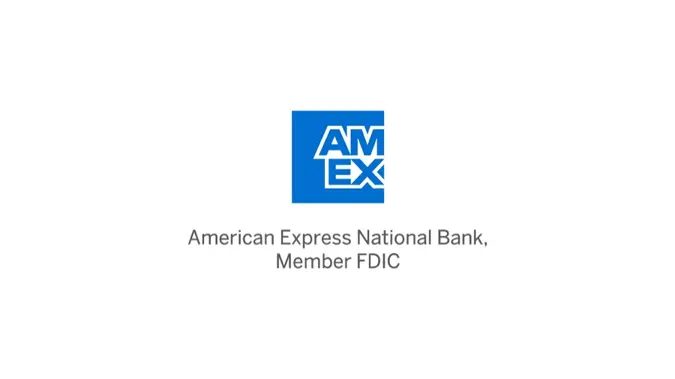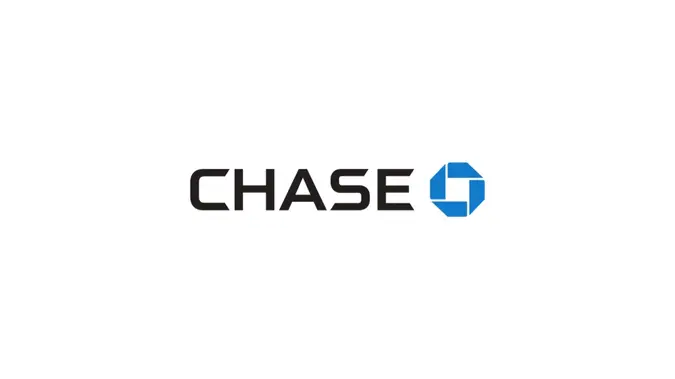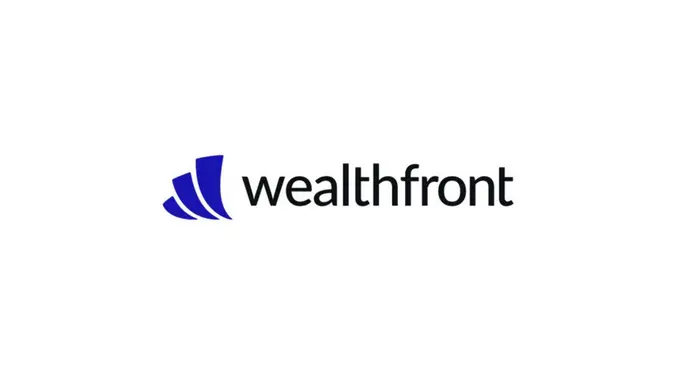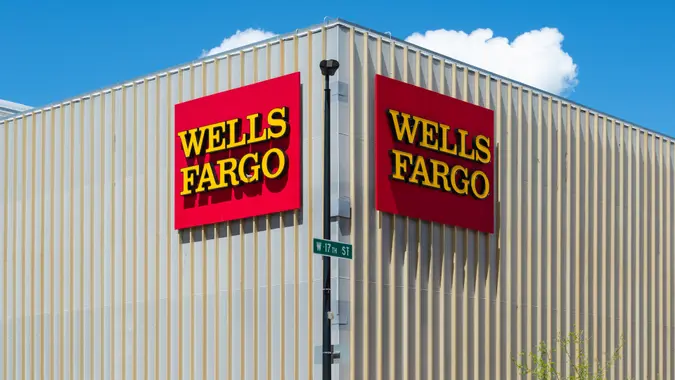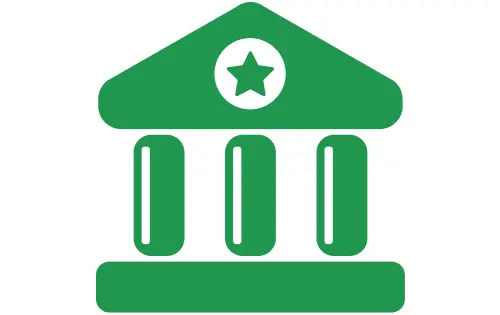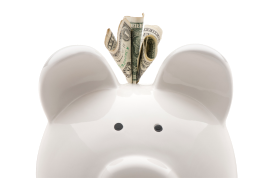Cash App Savings Review: Up To 4.50% APY and No Fees
Commitment to Our Readers
GOBankingRates' editorial team is committed to bringing you unbiased reviews and information. We use data-driven methodologies to evaluate financial products and services - our reviews and ratings are not influenced by advertisers. You can read more about our editorial guidelines and our products and services review methodology.

20 Years
Helping You Live Richer

Reviewed
by Experts

Trusted by
Millions of Readers
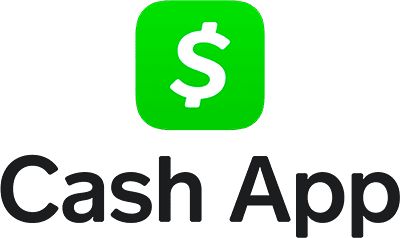
Cash App
-
APY
4.5
-
Fees
5.0
-
Security Features
4.5
-
Automated Savings Tools
4.0
Pros
- Up to 4.50% APY
- No minimums or fees
- No limits on number of monthly transfers
Cons
- $300 in monthly direct deposits required for 4.50% APY
- 1.50% APY default savings rate
Cash App Savings Overview
Once upon a time, Cash App was just a peer-to-peer payment platform, but recently it’s upped its game by offering users the Cash App Savings account, which pays a competitive high-yield APY of up to . If you’re already a Cash App user, you might find this fee-free savings option convenient and helpful for building your savings balance. However, be aware that you have to meet certain requirements to earn the highest yield offered.
Key Features
Here’s a look at the key features of a Cash App Savings account to help you decide if it’s the right savings option for you.
APY
The Cash App Savings account offers a competitive APY of up to . To earn APY on your savings, you must be at least 18 years old, have a Cash Card and use a personal account — not a Cash for Business account1. To receive the highest yield of , you must also receive at least $300 in direct deposits each month. If you don’t receive at least $300 in direct deposits in any given month, the APY will be .
Fees
Cash App Savings does not have any fees, including minimum account fees or hidden fees. Savings accounts often have monthly maintenance fees of $5-$8 — or even as high as $25 if the account is of the high-yield variety. However, Cash App doesn’t charge a monthly maintenance fee, either.
Security Features
Cash App offers advanced security features, which serve as protection for every account. It fights fraud by asking you to confirm anyone who is not in your contacts before sending money. You’ll also be notified if there’s a change in your personal identification number or security settings. Cash App also requires you to verify your identity to ensure it’s actually you logging in to your account. Additionally, with the Cash Card, your savings balance is FDIC insured through the platform’s partner bank for up to $250,000 per person2.
Automated Savings Tools
Automated savings is a great way to save toward a goal without having to think about it. Cash App allows you to set up specific savings goals through the app. To get started, tap the Money tab on the Cash App home screen, tap your savings balance, choose “Set a goal” and enter your savings goal amount.
Then, with an activated Cash Card, you can round up your transactions to the nearest dollar and have the change automatically transferred to your Cash App Savings balance each time you make a purchase. You can also manually transfer money from your Cash App balance or a linked external account to help you meet your goal.
How Cash App Savings Stands Out
Cash App Savings stands out for a variety of reasons. You can open it online in a few minutes. It has no minimums or fees. Plus, you have the opportunity to earn APY as long as you receive at least $300 in direct deposits each month. Finally, there are no limits or caps on the amount of transfers you make between your Cash and savings balances.
Comparable Savings Account Options
Here are some comparable savings account options to see how Cash App Savings measures up.
Synchrony High Yield Savings
The Synchrony High Yield Savings account has no minimum deposit, minimum balance or monthly fees, which is right in line with Cash App Savings. However, its APY is compared to the Cash App Savings account’s APY. Plus, account holders are not required to receive direct deposits to receive the high-yield APY.
American Express® High Yield Savings Account
Like the Cash App Savings account, the High Yield Savings Account from American Express National Bank, Member FDIC, has no minimum balance and no monthly fees. However, its Annual Percentage Yield is lower at . Even so, the account does not have a direct deposit requirement to earn the high-yield APY like the Cash App Savings account does.
All information about American Express High Yield Savings Account offers has been collected independently by GOBankingRates and has not been reviewed or approved by American Express. The American Express High Yield Savings Account is not available through GOBankingRates.
How To Apply
To get started with Cash App Savings, follow these steps:
- Scan the QR code on the Cash App Savings webpage or download the Cash App mobile app directly from Google Play or the App Store.
- Follow the prompts to register for an account.
- Apply for a Cash Card to unlock interest-earning potential.
Who Cash App Savings Is Best For
Cash App Savings is best for people who enjoy using peer-to-peer payment platforms, including Cash App, and who will consistently receive at least $300 in direct deposits each month to earn the account’s highest yield of APY.
Final Take
If you’re already a Cash App user, you can set up specific savings goals for your Cash App Savings account. Link an external savings account to transfer money when you wish. Plus, with each purchase you make with your Cash Card, you can choose to automatically round up your purchases to the nearest dollar and bump up your savings balance so you can reach goals much faster.
However, you’ll want to make sure that you’ll receive at least $300 in direct deposits each month so that you can earn Cash App’s highest yield of APY on your savings balance. Otherwise, the yield will be just APY, which isn’t worth it, considering you can earn more elsewhere without a direct deposit requirement.
FAQ
- Is Cash App Savings a good idea?
- It depends on what type of banking experience you're looking for3. Cash App Savings doesn't have a separate account number like you'll find at traditional banks. Instead, Cash App says to think of it as a "separate folder" to store your funds. Also, Cash App isn't a bank; it's a financial services platform. However, with the Cash Card, your savings balance is FDIC insured via Cash App's partner bank for up to $250,000 per person.
- How do I add a savings account to my Cash App?
- To add a Cash App Savings account to your Cash App, you'll need to apply for a Cash Card in the app to unlock interest-earning potential.
- If you want to add an external savings account to your Cash App, you will need to link the bank account from your Cash App. Cash App uses Plaid to link to your bank account.
- Can I cash out my Cash App balance to my savings account?
- Yes, you can cash out your Cash App balance to any linked savings account.
Rates are subject to change; unless otherwise noted, rates are updated periodically. All other information on accounts is accurate as of March 18, 2024.
Editorial Note: This content is not provided by any entity covered in this article. Any opinions, analyses, reviews, ratings or recommendations expressed in this article are those of the author alone and have not been reviewed, approved or otherwise endorsed by any entity named in this article.
*To earn the highest interest rate on your Cash App Savings balance, you need to be 18 or older, have a Cash App Card, and direct deposit at least $300 monthly into Cash App. Cash App will pass through a portion of the interest paid on your savings balance held in an account for the benefit of Cash App customers at Wells Fargo Bank, N.A., Member FDIC.
1Prepaid debit cards issued by Sutton Bank. Direct deposit provided by Cash App.
2 Balance is FDIC insured through Wells Fargo Bank, N.A., Member FDIC, for up to $250,000 per person.
3 Cash App is a financial platform, not a bank. Banking services provided by Cash App’s bank partner(s).
 Written by
Written by  Edited by
Edited by 











